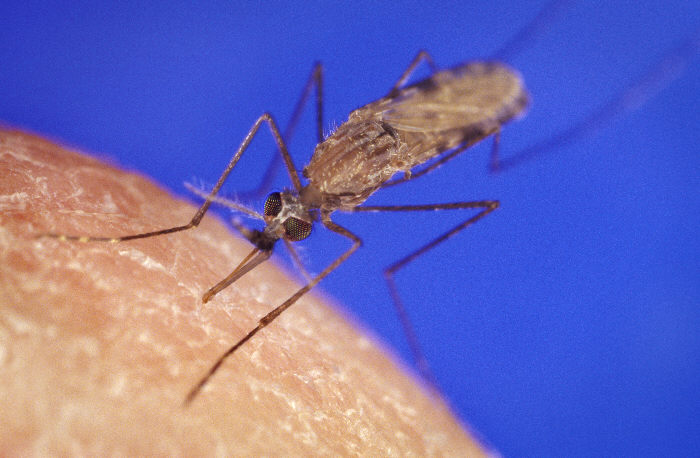Selfish genetic elements that promote their own survival could be used to  disrupt mosquito genes essential for malaria transmission.
disrupt mosquito genes essential for malaria transmission.
Scientists have been attempting to create malaria-resistant mosquitoes for many years, announcing the first contender in 2002. But keeping the malaria-suppressing genes circulating in the mosquito population has been a major weakness of these strategies because the modifications often also render the insect simultaneously less fit.
"It was clear from the very beginning that the bottleneck was to transmit the genetic modification to wild-type mosquitoes. Because you cannot keep releasing [modified] mosquitoes - this is very expensive," explains Imperial College London scientist Professor Andrea Crisanti, one of the authors of the new study.
Instead, Crisanti and his colleagues have developed a selfish gene system that replaces competing genes with a version of itself to ensure that it remains in circulation.
Known as homing endonuclease genes or HEGs, they act like a molecular pair of scissors, making cuts in DNA wherever certain specific combinations of genetic letters crop up.
Such enzymes are common and well known, but the breakthrough pioneered by the Imperial team has been to exploit the fact that genes are usually present in pairs, with one inherited from each parent.
By installing a HEG as one of the pairs of a gene, the team found that this cuts out the DNA of its non-HEG counterpart. Then, when DNA repair mechanisms kick-in to patch up the damage, they use the HEG DNA as a template, duplicating the HEG-coding DNA at the expense of the non-HEG gene.
This means that the HEG will be inherited by most of the mosquito offspring, rather than just 50% if things were left to chance. The result is that the HEG will spread rapidly through a breeding population of the insects.
"By starting with few mosquitoes we could modify quite large laboratory cage populations in a matter of 12 generations, nearly equivalent to the malaria transmission season."
So these self-replicating elements can spread well, but what about malaria?
"You can engineer the HEG to recognise any sequence that you want ... there are a lot of very interesting candidates," says Crisanti.
This could include targeting genes that control mosquito lifespan, behaviour, or female differentiation.
But since HEGs are so dominant, there is a danger that they could escape and target other genes, potentially allowing harmful traits like pesticide resistance to spread, although this is very unlikely considering the specificity of the HEG. Nevertheless, Crisanti stresses that his group are taking safety concerns like this seriously.
"We are now working on identifying the gene that we want to target ... and of course we want to carry out a number of laboratory tests to assess a lot of issues that are associated with genetically manipulated mosquitoes, which are species specificity, safety, and ethical issues."
Andrea Crisanti, an author of the study, explains how HEGs could be used to spread malaria-resistance genes amongst mosquitoes
- Previous "G. coli": bacteria thrive in hypergravity
- Next Crucifiction?










Comments
Add a comment